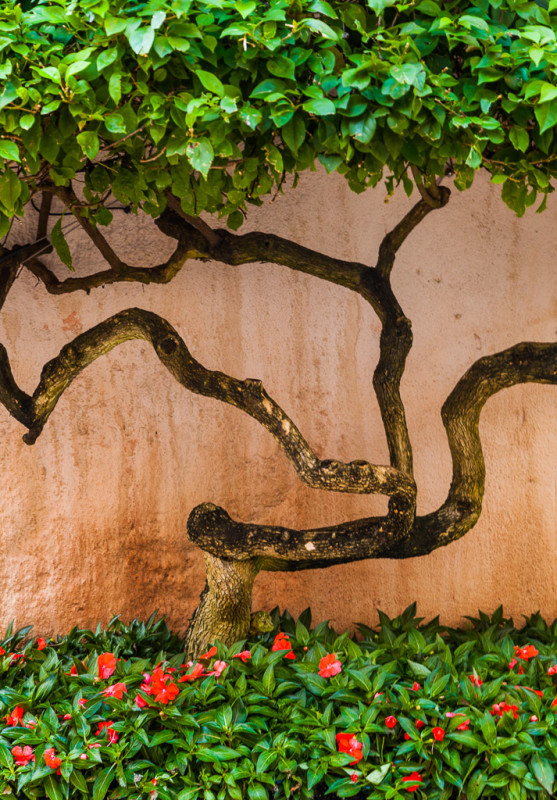
A fundamental photographic lesson I have learned over the years is to keep the photograph simple and include only those elements of the scene that serve to draw the viewer’s attention to the subject. Obviously, this is just a guideline, not a rule, and there are times when including more in the photograph is appropriate. But, I have found that, most of the time, the less I include, the stronger the image becomes.
The image above illustrates this point. I took this photograph a couple of weeks ago at the Morocco pavilion in Epcot’s World Showcase. As I was walking through the corridors of the pavilion, I spotted this tree standing in front of the wall of a building. I was especially intrigued with the curves of the tree trunk. I photographed several different compositions, such as including a door that was just to the left of the tree, a window that was just above the tree, and then both the door and the window. But, I realized that by including these extra elements in the frame, the image was losing its simplicity, and I was losing focus what I considered the focal point – the curves of the trunk.
I zoomed out to the longest focal length I had (105mm on my 24-105mm lens), but that still left a lot of “extras” that I did not want to include. So, to eliminate those items, I took a couple of steps closer to the tree to get the exact framing I wanted. In the final image, I left a small amount of foliage at the top and bottom of the image to provide a sense of context. But, by keeping the image simple, the viewer is able to look at this image and instantly know what the subject of the photograph is.
Settings: Canon 5D Mk II, 105mm, f/8, 1/8 sec